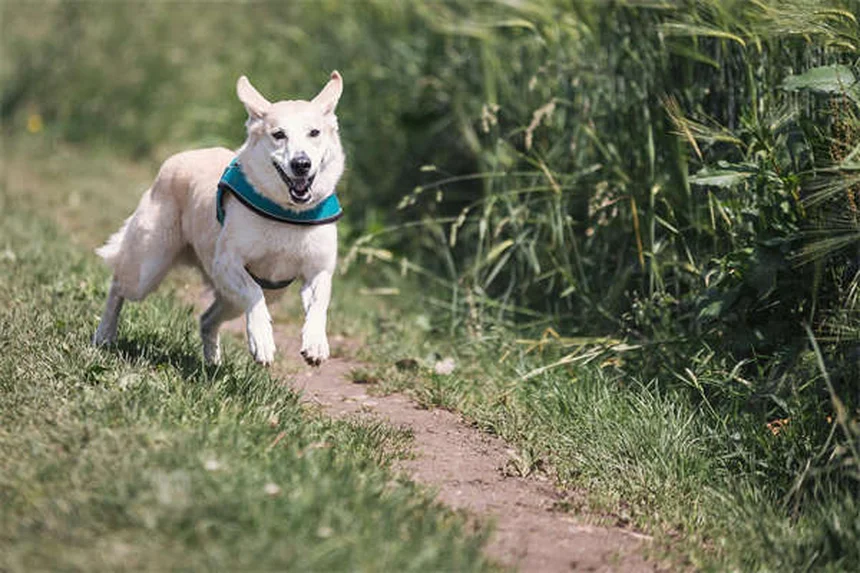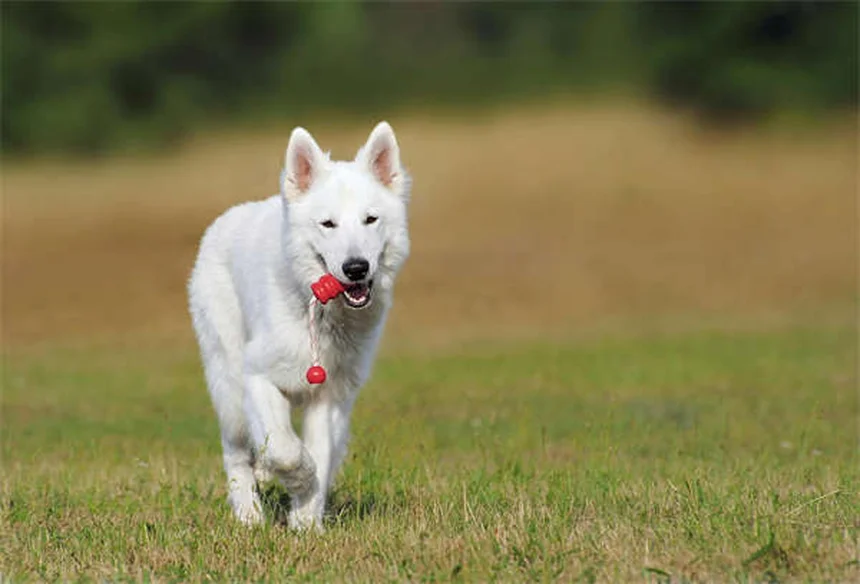Advertisement
Can guinea pigs eat grapes? The answer is yes - but with some important caveats! While grapes aren't toxic to guinea pigs like they are for dogs, these sweet fruits should only be an occasional treat. Here's the deal: grapes contain beneficial antioxidants and vitamin C that can support your piggy's health, but their high sugar content means they should make up less than 5% of your pet's diet. We recommend feeding just one small grape (cut into pieces) no more than twice a week to avoid weight gain and digestive issues. Want to know how to safely prepare grapes and discover healthier alternatives? Keep reading - we've got all the juicy details!
E.g. :When Is a Dog Considered a Senior? Age Guide by Breed Size
- 1、Are Grapes Safe and Healthy for Guinea Pigs?
- 2、Potential Risks of Feeding Grapes
- 3、How to Serve Grapes Safely
- 4、Grape Alternatives and Treat Frequency
- 5、Special Grape Considerations
- 6、Final Tips for Grape Feeding
- 7、Understanding Guinea Pig Nutrition Basics
- 8、Expanding Your Guinea Pig's Menu
- 9、Creating a Balanced Feeding Routine
- 10、Special Considerations for Different Ages
- 11、Common Feeding Mistakes to Avoid
- 12、FAQs
Are Grapes Safe and Healthy for Guinea Pigs?
The Sweet Truth About Grapes
Let me tell you something - grapes are like nature's candy for us humans, but what about our furry little friends? Guinea pigs can absolutely enjoy grapes, but there's some important stuff you need to know first.
Unlike dogs where grapes can be toxic, guinea pigs can safely nibble on these juicy treats. Here's why grapes can be good: they're packed with antioxidants like quercetin and resveratrol that help fight inflammation. Think of them as tiny bodyguards protecting your piggy's cells! They also contain vitamin C - which is super important since guinea pigs can't make their own like we can.
Nutritional Powerhouse or Sugar Bomb?
Now, here's where it gets interesting. While grapes have great nutrients, they're also loaded with natural sugars. Too much sugar can lead to weight gain and tummy troubles for your little buddy. That's why we need to be careful about portion sizes.
Check out this quick comparison of grape nutrients vs. other guinea pig favorites:
| Food | Vitamin C (mg per 100g) | Sugar (g per 100g) |
|---|---|---|
| Grapes | 3.2 | 15.5 |
| Oranges | 53.2 | 9.4 |
| Bell Peppers | 80.4 | 4.8 |
Potential Risks of Feeding Grapes
 Photos provided by pixabay
Photos provided by pixabay
The Sugar Problem
Here's something that might surprise you - did you know that just 5 grapes contain about the same amount of sugar as a teaspoon of table sugar? That's why we need to go easy on these sweet treats!
If your guinea pig eats too many grapes, they might develop digestive issues or even become overweight. Remember, their main diet should be hay (about 80%), fresh veggies (15%), and only about 5% treats like fruits.
Allergies and Choking Hazards
While rare, some guinea pigs might be allergic to grapes. Watch for signs like swelling or difficulty breathing. Also, those tiny seeds? Big choking risk! Always remove seeds or buy seedless varieties.
Here's a funny story - my friend's guinea pig once tried to swallow a whole grape like a little vacuum cleaner! That's why I always cut them into quarters now.
How to Serve Grapes Safely
Preparing the Perfect Grape Treat
Want to know the best way to serve grapes? First, wash them thoroughly - you never know what pesticides might be lingering. Then, remove any seeds and cut them into small pieces. The skin is actually the healthiest part, so leave that on!
Darker colored grapes (purple, red, black) tend to have more antioxidants than green ones. But any color is fine as long as it's fresh and properly prepared.
 Photos provided by pixabay
Photos provided by pixabay
The Sugar Problem
Here's a fun idea - try freezing grape pieces in summer for a cool treat! Or mash them up and spread on a piece of hay. Just don't cook or can them - that destroys the nutrients.
Remember, variety is key to keeping your guinea pig happy. Rotate between different fruits and veggies to give them a balanced diet.
Grape Alternatives and Treat Frequency
Other Fruit Options
If you're looking for alternatives with less sugar but still packed with vitamin C, try these:
- Bell peppers (especially red ones)
- Strawberries
- Kiwi (remove the skin)
- Oranges (in very small amounts)
How Often Should You Feed Grapes?
Here's a question I get all the time: "Can I give my guinea pig grapes every day?" Absolutely not! Once or twice a week is plenty, and just one small grape per serving is enough.
Think of grapes like candy - delicious but best in moderation. Your piggy's main diet should still be hay, hay, and more hay!
Special Grape Considerations
 Photos provided by pixabay
Photos provided by pixabay
The Sugar Problem
Found some wild grapes in your backyard? Hold on! Unless you're 100% sure they're pesticide-free, it's safer to stick with store-bought organic grapes. Those wild ones might have harmful chemicals we can't see.
What About Grape Products?
Grape jelly? Grape juice? Raisins? No way! These processed versions have way too much sugar and often contain additives that aren't safe for guinea pigs. Fresh is always best when it comes to your furry friend's diet.
Final Tips for Grape Feeding
Monitoring Your Guinea Pig
After introducing grapes (or any new food), watch your piggy closely for the next 24 hours. Look for changes in poop consistency, energy levels, or appetite. If anything seems off, skip the grapes next time.
Emergency Signs to Watch For
While rare, serious reactions can happen. If you notice difficulty breathing, extreme lethargy, or refusal to eat, contact your vet immediately. Better safe than sorry when it comes to our little buddies!
Remember, every guinea pig is different. What works for my piggy might not work for yours. Start slow, observe carefully, and enjoy watching your furry friend discover new flavors!
Understanding Guinea Pig Nutrition Basics
The Importance of Vitamin C
You know how sailors used to get scurvy on long voyages? Well, guinea pigs are like tiny pirates when it comes to vitamin C - they can't produce it themselves! That's why we need to make sure they get enough through their diet.
While grapes do contain some vitamin C, they're not the best source. A medium-sized orange has about 16 times more vitamin C than the same amount of grapes. But here's the kicker - guinea pigs only need about 10-30mg of vitamin C daily. Too much can actually cause problems, so balance is key.
Fiber - The Unsung Hero
Let me ask you something - what's the one food guinea pigs should eat more than anything else? Hay! And here's why: their digestive systems are designed to process lots and lots of fiber.
Unlike grapes which are mostly water and sugar, hay provides the roughage guinea pigs need to keep their gut moving. Think of it like this - if grapes are the dessert, hay is the main course. Without enough fiber, guinea pigs can develop serious digestive issues that might require vet attention.
Expanding Your Guinea Pig's Menu
Beyond Grapes - A Rainbow of Options
While we're talking about grapes, let's explore some other great fruit options that offer variety and nutrition:
| Fruit | Vitamin C (mg per 100g) | Sugar Content | Special Notes |
|---|---|---|---|
| Papaya | 60.9 | Medium | Great for digestion |
| Blueberries | 9.7 | Medium | Small size perfect for treats |
| Watermelon | 8.1 | High | Great hydration in summer |
Notice how some fruits have way more vitamin C than grapes? That's why rotating different fruits gives your piggy a nutritional boost without overloading on sugar.
The Vegetable Superstars
Here's a fun fact - most guinea pigs go crazy for bell peppers! Red bell peppers actually contain about 25 times more vitamin C than grapes by weight. And they have way less sugar too.
Other veggie favorites include:- Cucumber (great for hydration)- Zucchini (low in sugar)- Carrot tops (not the orange part!)- Romaine lettuce (avoid iceberg)
Remember to introduce new foods slowly - their tiny tummies need time to adjust!
Creating a Balanced Feeding Routine
Timing and Portion Control
Ever wonder why guinea pigs seem hungry all the time? Their digestive systems work best with small, frequent meals. Here's what works for me:
Morning:- Fresh hay (unlimited)- Small portion of pellets- A few veggie pieces
Evening:- More fresh hay- Different veggies- Occasional fruit treat (like 1-2 grape pieces)
This routine keeps their gut moving while preventing overeating on sugary foods.
Making Mealtime Fun
Want to see something adorable? Try hiding grape pieces or other treats in their hay! This encourages natural foraging behavior and keeps them mentally stimulated.
You can also create simple food puzzles using toilet paper rolls - stuff them with hay and hide a couple grape pieces inside. Watching your guinea pig figure it out is half the fun!
Special Considerations for Different Ages
Baby Guinea Pigs
Did you know baby guinea pigs (called pups) have different nutritional needs? While grapes might be okay occasionally, their developing digestive systems do better with:
- Alfalfa hay (higher in calcium)- More frequent small meals- Extra vitamin C for growth- Limited sugary treats
Wait until they're at least 4 months old before introducing fruits like grapes.
Senior Guinea Pigs
Older piggies often need special care when it comes to diet. Their teeth might not be as strong, so make sure to cut grapes into very small pieces.
Some seniors benefit from:- Softer veggies like cooked squash- More frequent but smaller meals- Extra vitamin C supplements (check with your vet)- Monitoring weight closely
Remember, every guinea pig is unique - what works for one might not work for another!
Common Feeding Mistakes to Avoid
Overdoing the Treats
Here's a question I hear all the time: "But my guinea pig loves grapes so much - can't I give them more?" Resist those begging eyes! Too many treats can lead to:
- Obesity (chubby guinea pigs might look cute but it's unhealthy)- Digestive upset- Selective eating (they might start refusing healthier foods)- Dental problems from too much sugar
Stick to the 5% rule - treats should only be a tiny part of their overall diet.
Ignoring Individual Preferences
Just like people, guinea pigs have personal tastes! Some might go crazy for grapes while others prefer blueberries. Pay attention to what your particular piggy enjoys and adjust accordingly.
Also watch for any signs of discomfort after eating certain foods. If grapes give your guinea pig loose stools, maybe try strawberries instead. Their little bodies will tell you what works!
E.g. :Can Guinea Pigs Eat Grapes? | PetMD
FAQs
Q: Are grapes safe for guinea pigs to eat?
A: Yes, grapes are generally safe for guinea pigs, but there are some important precautions to keep in mind. Unlike dogs where grapes can be toxic, guinea pigs can enjoy small amounts of this fruit. The key is moderation - grapes contain natural sugars that can cause weight gain and digestive problems if fed too often. We suggest removing the seeds (or using seedless grapes) and cutting them into small pieces to prevent choking. Always introduce new foods slowly and watch for any signs of allergic reaction like swelling or diarrhea. Remember, treats like grapes should only make up about 5% of your guinea pig's diet.
Q: How many grapes can I give my guinea pig?
A: When it comes to portion size, less is definitely more with grapes. We recommend giving your guinea pig no more than one small grape per serving, and limiting these treats to just once or twice a week. Think of grapes like candy for humans - delicious but not something you'd want to eat every day! A whole grape might seem small to us, but remember that guinea pigs are tiny creatures with equally tiny digestive systems. Cutting the grape into quarters makes it easier to eat and helps prevent choking. Always balance these sweet treats with plenty of hay, which should make up about 80% of their diet.
Q: What are the health benefits of grapes for guinea pigs?
A: Grapes offer several potential health benefits for your furry friend. They contain vitamin C, which is essential since guinea pigs can't produce their own. The skin and flesh are packed with antioxidants like quercetin and resveratrol that may help reduce inflammation. Darker colored grapes (red, purple, black) tend to have more of these beneficial compounds than green grapes. The high water content in grapes can also help keep your piggy hydrated. However, we should note that while these nutrients are beneficial, your guinea pig would need to eat more grapes than is safe to get significant health effects - that's why we recommend using them as occasional treats rather than dietary staples.
Q: Can guinea pigs eat grape seeds and skins?
A: This is an important safety question! While the skins are actually the most nutritious part of the grape (containing most of the antioxidants), the seeds can be dangerous. We strongly recommend either removing the seeds or using seedless grape varieties, as seeds pose a choking hazard. The skins are perfectly safe and beneficial to leave on, but make sure to wash grapes thoroughly to remove any pesticide residue. If you're using organic grapes, you can feel even better about leaving the skins on. Just remember to cut the grape (with skin) into small, manageable pieces that your guinea pig can easily chew and swallow.
Q: What are some healthier alternatives to grapes for guinea pigs?
A: If you're looking for lower-sugar options that still provide vitamin C and other nutrients, we've got some great suggestions! Bell peppers (especially red ones) are packed with vitamin C and have much less sugar than grapes. Other good options include small pieces of strawberry, kiwi (without the skin), or orange segments (in very limited amounts). Leafy greens like romaine lettuce, kale, and parsley are also excellent choices. Remember that no single fruit or vegetable should dominate your guinea pig's diet - variety is key to providing all the nutrients they need while keeping their meals interesting. And don't forget - hay should always be the main component of their diet!

